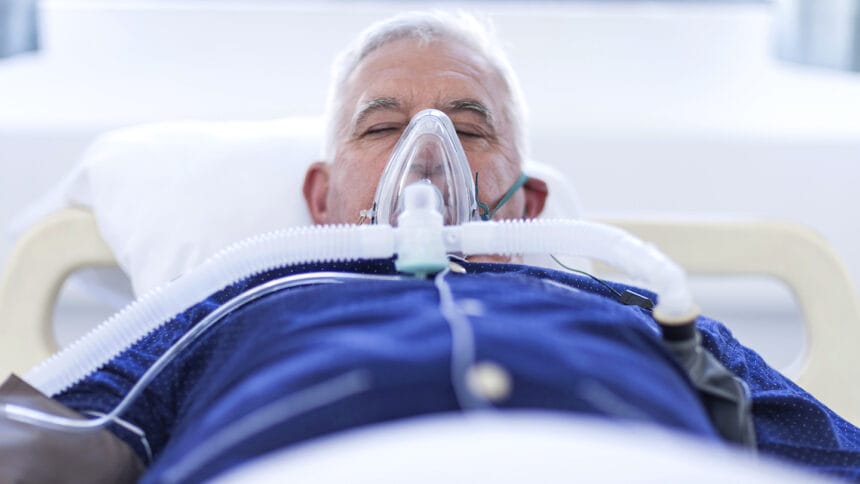
Shifting payment policies have decreased Medicare spending on patients requiring mechanical ventilation, but they also have led to the closure of many long-term care hospitals and have driven more patients with tracheostomies to skilled nursing facilities.
Researchers now wonder after a new study whether the nation’s nursing homes can adequately meet the demand of caring for those more complex patients.
“We found that LTCH closures affected some in-hospital and discharge practices in unintended ways. For example, at hospitals that depended on a closing LTCH, people receiving prolonged mechanical ventilation were discharged to skilled nursing facilities more often,” said Anica Law, MD, assistant professor of medicine at Boston University Medical School and corresponding author of research published in JAMA Network Open Tuesday.
“These are patients that CMS reform intended to keep at LTCHs, and it’s not known if skilled nursing facilities are as well-equipped to handle the complexities of long-term mechanical ventilation,” Law added.
Long-term care hospitals were created in the 1980s as a carveout from the acute care hospital Prospective Payment System. Because of longer lengths of stay compared with regular hospitals, the Centers for Medicare & Medicaid Services reimbursed the LTCHs at higher rates, and their numbers grew rapidly in the 2000s.
But since 2005, CMS has implemented several payment changes reforms meant to slow development of new facilities and limit spending on them. The authors cited the Pathway for Sustainable Growth Rate Reform Act of 2013 as a critical turn because it limited higher reimbursement rates for patients requiring more complex care, including those needing prolonged mechanical ventilation. Instead of just limiting admissions, however, many LTCHs — 20% according to this study — closed all together.
In some locations, that decreased length of stay at acute-care hospitals for patients with tracheostomies between 2011 and 2019, likely because the challenges of finding a LTCH placement had been even more difficult than finding placements in more numerous nursing homes.
The study examined conditions before the advent of skilled nursing’s Patient Driven Payment Model in late 2019; it’s unclear whether new pay adjustments intended to support care for nursing home patients with ventilator or trach needs would have improved access or once again driven up Medicare costs.
But even boosted by care they provided to severely ill COVID patients during the public health emergency, some ventilator units have closed in the last few years, citing increasing costs and insufficient reimbursement. The planned closure of one such facility in Pennsylvania last year was expected to leave the entire state with just three similar specialty providers.
Law and colleagues from Boston University, Beth Israel Deaconess Medical Center in Boston and the University of Pittsburgh reported that tracheostomies had been the strongest factor associated with LTCH use over SNF use. As fewer LTCHs are available in many markets, that raises key questions about quality of care provided to those kinds of patients when they must seek long-term support elsewhere.
“Like LTCHs, SNFs are known to vary in quality and capability of caring for complex patients,” the researchers wrote. “The ability of SNFs in the US to care for patients receiving or recovering from prolonged MV [mechanical ventilation] in the US is understudied. Our findings suggest that discharge of a subset of patients recovering from prolonged MV (eg, after weaning or while receiving stable MV) to SNFs may result in similar mortality outcomes with lower spending compared with LTCHs, although functional outcomes, complication rates, and other patient-centered outcomes remain unclear and require further study.”
Another key finding that researchers were unable to fully understand was an increased adoption of do-not-resuscitate orders among patients with trachs at hospitals with fewer LTCH options.
“The plasticity of end-of-life decisions to changes in available postacute resources has not been clearly demonstrated. Whether increased do-not-resuscitate orders after LTCH closure represent improved attainment of goal-concordant care or are the result of institutional pressure resulting from changing discharge options remains unclear,” they wrote.
“It is possible that transitions in goals of care occur gradually over a longer period among patients who are more severely ill, and tracheostomy decisions may occur before patients and families are ready to transition goals or the tracheostomy may be viewed by patients and families as part of a time-limited trial that informs later goals-of-care discussions,” they added.




